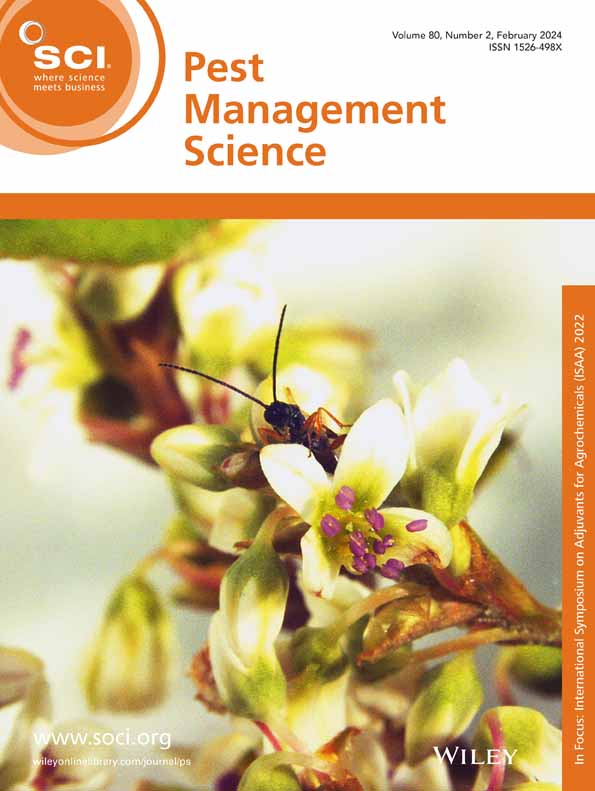Interactions between prosulfocarb and trifluralin metabolism in annual ryegrass (Lolium rigidum)
Abstract
BACKGROUND
Cross-resistance between pre-emergence herbicides is developing in Australian populations of annual ryegrass (Lolium rigidum Gaud.). A previous study has reported that selection with prosulfocarb (a pro-herbicide requiring bioactivation to its phytotoxic sulfoxide) can decrease metabolic resistance to trifluralin. Metabolism of prosulfocarb and trifluralin was investigated in L. rigidum populations with different levels of resistance to prosulfocarb, trifluralin and also pyroxasulfone, which is detoxified by glutathione (GSH) conjugation.
RESULTS
Coleoptiles and radicles of herbicide-treated seedlings responded differently to the same herbicide. Radicles had a lower capacity for bioactivation of prosulfocarb, and this was correlated with a lower ability to metabolise trifluralin within and among populations. Coleoptile resistance to prosulfocarb sulfoxide was negatively correlated with abundance of a major polar metabolite. There was no evidence of GSH conjugation with the sulfoxide, making any potential links between prosulfocarb and pyroxasulfone resistance less obvious.
CONCLUSIONS
Activation and metabolism of prosulfocarb in L. rigidum is complex and differentially regulated in different tissues. Selection with prosulfocarb may ameliorate trifluralin metabolism in the radicles, but the relationship between prosulfocarb and pyroxasulfone resistance is not GSH-mediated. When applying pre-emergence herbicides, care should be taken with the composition of mixtures and rotations to avoid selection of cross-resistance between pyroxasulfone and prosulfocarb. © 2024 The Author(s). Pest Management Science published by John Wiley & Sons Ltd on behalf of Society of Chemical Industry.


 求助内容:
求助内容: 应助结果提醒方式:
应助结果提醒方式:


